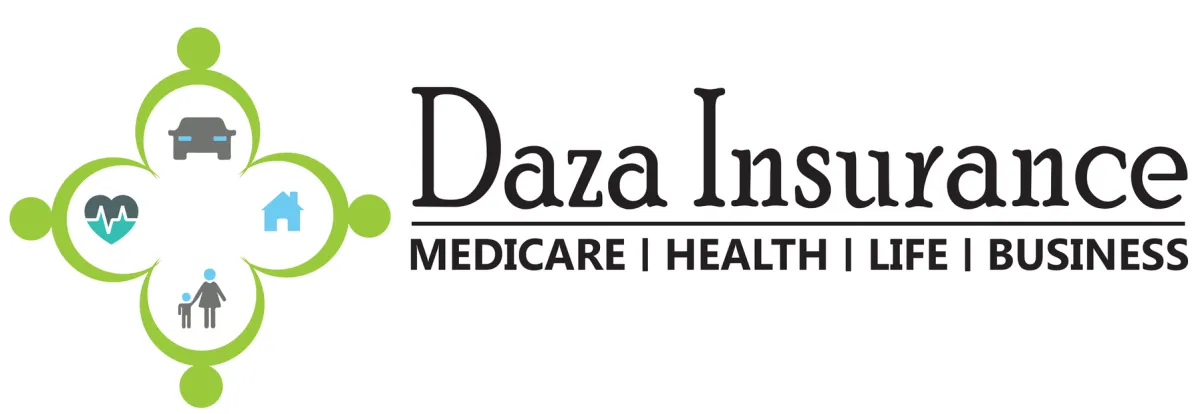
Health insurance is a type of insurance coverage that typically pays for medical, surgical, prescription drug and sometimes dental expenses incurred by the insured. A Health insurance policy can reimburse the insured for expenses incurred from illness or injury or pay the care provider directly (this is also called hospital indemnity among other names). It is often included in employer benefit packages, with premiums partially covered by the employer but often also deducted from employee paychecks.
What is covered under a health insurance ACA ( Affordable Care Act )
ACA is also known as Obamacare health insurance plans are “major medical” health insurance plans. That means they're traditional health insurance plans that are designed to cover both minor and major medical issues.
There are 10 categories of services health insurance plans must cover under the Affordable Care Act. These include doctors' services, inpatient and outpatient hospital care, prescription drug coverage, pregnancy and childbirth, mental health services, and more. Some plans cover more services.
With an Obamacare-compliant health insurance plan you cannot be turned down based on a pre-existing medical condition or your personal medical history. You may be restricted to enrolling during the annual open enrollment period or when you experience a qualifying life event that triggers a special enrollment period.
Obamacare Health Insurance, has different types of Health Insurance
You may be familiar with the acronyms “PPO” or “HMO.” These terms are used to describe specific types of health insurance. These terms have to do with which doctors you can see and how they’re covered.
HMO plans: HMO stands for “health maintenance organization.” An HMO plan is one that typically limits you to a specific network of doctors and hospitals. If you see a provider out of the plans network, then you may not have coverage, in other words, you have to pay out of your pocket the cost of any of the services. With an HMO, you are required to choose a primary care physician who will then refer you to specialists on an as-needed basis.
PPO plans: PPO stands for “preferred provider organization.” PPO plans have a network of doctors that you should stick with if you want to get the highest level of coverage for your medical care. Coverage may be available outside this network. You are not required to pick a primary care physician with a PPO plan and referrals are not required if you want to see a specialist.
EPO plans: EPO stands for “exclusive provider organization.” This is a combination of HMO and PPO. An EPO plan is similar to a PPO plan but it has restrictions when it comes to your network of doctors and hospitals. EPO plans do not provide you with coverage outside your network, except in emergencies.
POS plans: POS stands for “point of sale.” A POS plan is usually described as a hybrid of a PPO and an HMO plan. You may be required to choose a primary care physician under a POS plan but you may still have some coverage when visiting doctors and hospitals outside your network.
HSA-eligible plans: These may be PPO, POS, EPO or HMO plans, but they are designed specifically for use with Health Savings Accounts, which allow you to save money on a pre-tax or tax-deductible basis to pay for qualifying medical expenses. HSA-eligible plans tend to have higher annual deductibles than some other plans.
Obamacare health insurance plans and metal levels
Let’s look at the different metal levels assigned to health insurance plans under Obamacare:
Platinum plans: Platinum plans tend to have the highest monthly premiums and the lowest out-of-pocket costs. Platinum plans are designed so that the average enrollee will pay about 10% of his or her covered medical expenses, while the insurance company pays about 90%.
Gold plans: Gold plans are designed to cover about 80% of the covered medical costs for an average enrollee, while the policy holder will pay an average of about 20% (again, that means in the form of deductibles, copayments, or coinsurance).
Silver plans: Silver plans are typically a bit more affordable in terms of monthly premiums, but they require more from you in out-of-pocket costs when you receive medical care. Silver plans are designed so that the average enrollee will have to pay about 30% of his or her covered medical expenses while the insurance company pays about 70%.
Bronze plans: Bronze plans are designed to cover about 60% of the average enrollee’s covered medical expenses. The enrollee will be expected to cover about 40%. Because you typically pay more out of pocket when you get medical care, your monthly premiums tend to be less costly under a bronze plan.
Catastrophic plans: Technically not a “metal level” designation, catastrophic plans cover many of the same health insurance benefits as other Obamacare plans but may require you to pay more for your medical care. Premiums are lower with these plans but they tend to come with higher deductibles. Catastrophic plans are only available to people under age 30 or those who meet other special requirements. You cannot use Obamacare subsidies to help pay your premiums under a catastrophic plan.
Nob-Obamacare health insurance plan types
While all major medical health insurance plans are now officially “Obamacare” plans, there are other health insurance plans and products available that do not meet the coverage requirements of Obamacare. These products may leave you exposed to an Obamacare tax penalty if you go without Obamacare-compliant coverage for more than two consecutive months in a single year.
However, these non-Obamacare products do meet the temporary coverage needs of some consumers, and some of them can be used in conjunction with an Obamacare plan to provide additional coverage and protection.
Short-term health insurance: Short-term health insurance plans are designed to provide you with a level of protection against unexpected medical bills for a limited period of time. They typically do not cover preventive medical care, maternity care, or pre-existing medical conditions, and they may not cover prescription drugs. You can be turned down for short-term coverage based on your medical history. However, short-term plans are relatively affordable and can be purchased year-round.
Dental insurance: Dental insurance provides you with coverage for certain dental services on an annual basis. Dental insurance is typically not included in Obamacare health insurance plans.
Vision insurance: Vision coverage is typically not covered by Obamacare plans. Vision insurance typically provides you with coverage for an annual vision check-up and for glasses or contacts once every year or two.
Accident insurance: Accident insurance pays you directly if you experience a qualifying injury. You can then use the money to pay for medical bills, your mortgage, or for whatever you want.
Critical Illness insurance: Critical illness insurance pays you directly if you are diagnosed with a qualifying serious medical condition. You can then use the money to pay for medical bills, your mortgage, or for whatever you want.
Travel insurance: Travel insurance plans are temporary insurance plans designed to help you pay for medical expenses while traveling overseas.

Health insurance is a type of insurance coverage that typically pays for medical, surgical, prescription drug and sometimes dental expenses incurred by the insured. A Health insurance policy can reimburse the insured for expenses incurred from illness or injury or pay the care provider directly (this is also called hospital indemnity among other names). It is often included in employer benefit packages, with premiums partially covered by the employer but often also deducted from employee paychecks.
What is covered under a health insurance ACA ( Affordable Care Act )
ACA is also known as Obamacare health insurance plans are “major medical” health insurance plans. That means they're traditional health insurance plans that are designed to cover both minor and major medical issues.
There are 10 categories of services health insurance plans must cover under the Affordable Care Act. These include doctors' services, inpatient and outpatient hospital care, prescription drug coverage, pregnancy and childbirth, mental health services, and more. Some plans cover more services.
With an Obamacare-compliant health insurance plan you cannot be turned down based on a pre-existing medical condition or your personal medical history. You may be restricted to enrolling during the annual open enrollment period or when you experience a qualifying life event that triggers a special enrollment period.
Obamacare Health Insurance, has different types of Health Insurance
You may be familiar with the acronyms “PPO” or “HMO.” These terms are used to describe specific types of health insurance. These terms have to do with which doctors you can see and how they’re covered.
HMO plans: HMO stands for “health maintenance organization.” An HMO plan is one that typically limits you to a specific network of doctors and hospitals. If you see a provider out of the plans network, then you may not have coverage, in other words, you have to pay out of your pocket the cost of any of the services. With an HMO, you are required to choose a primary care physician who will then refer you to specialists on an as-needed basis.
PPO plans: PPO stands for “preferred provider organization.” PPO plans have a network of doctors that you should stick with if you want to get the highest level of coverage for your medical care. Coverage may be available outside this network. You are not required to pick a primary care physician with a PPO plan and referrals are not required if you want to see a specialist.
EPO plans: EPO stands for “exclusive provider organization.” This is a combination of HMO and PPO. An EPO plan is similar to a PPO plan but it has restrictions when it comes to your network of doctors and hospitals. EPO plans do not provide you with coverage outside your network, except in emergencies.
POS plans: POS stands for “point of sale.” A POS plan is usually described as a hybrid of a PPO and an HMO plan. You may be required to choose a primary care physician under a POS plan but you may still have some coverage when visiting doctors and hospitals outside your network.
HSA-eligible plans: These may be PPO, POS, EPO or HMO plans, but they are designed specifically for use with Health Savings Accounts, which allow you to save money on a pre-tax or tax-deductible basis to pay for qualifying medical expenses. HSA-eligible plans tend to have higher annual deductibles than some other plans.
Obamacare health insurance plans and metal levels
Let’s look at the different metal levels assigned to health insurance plans under Obamacare:
Platinum plans: Platinum plans tend to have the highest monthly premiums and the lowest out-of-pocket costs. Platinum plans are designed so that the average enrollee will pay about 10% of his or her covered medical expenses, while the insurance company pays about 90%.
Gold plans: Gold plans are designed to cover about 80% of the covered medical costs for an average enrollee, while the policy holder will pay an average of about 20% (again, that means in the form of deductibles, copayments, or coinsurance).
Silver plans: Silver plans are typically a bit more affordable in terms of monthly premiums, but they require more from you in out-of-pocket costs when you receive medical care. Silver plans are designed so that the average enrollee will have to pay about 30% of his or her covered medical expenses while the insurance company pays about 70%.
Bronze plans: Bronze plans are designed to cover about 60% of the average enrollee’s covered medical expenses. The enrollee will be expected to cover about 40%. Because you typically pay more out of pocket when you get medical care, your monthly premiums tend to be less costly under a bronze plan.
Catastrophic plans: Technically not a “metal level” designation, catastrophic plans cover many of the same health insurance benefits as other Obamacare plans but may require you to pay more for your medical care. Premiums are lower with these plans but they tend to come with higher deductibles. Catastrophic plans are only available to people under age 30 or those who meet other special requirements. You cannot use Obamacare subsidies to help pay your premiums under a catastrophic plan.
Nob-Obamacare health insurance plan types
While all major medical health insurance plans are now officially “Obamacare” plans, there are other health insurance plans and products available that do not meet the coverage requirements of Obamacare. These products may leave you exposed to an Obamacare tax penalty if you go without Obamacare-compliant coverage for more than two consecutive months in a single year.
However, these non-Obamacare products do meet the temporary coverage needs of some consumers, and some of them can be used in conjunction with an Obamacare plan to provide additional coverage and protection.
Short-term health insurance: Short-term health insurance plans are designed to provide you with a level of protection against unexpected medical bills for a limited period of time. They typically do not cover preventive medical care, maternity care, or pre-existing medical conditions, and they may not cover prescription drugs. You can be turned down for short-term coverage based on your medical history. However, short-term plans are relatively affordable and can be purchased year-round.
Dental insurance: Dental insurance provides you with coverage for certain dental services on an annual basis. Dental insurance is typically not included in Obamacare health insurance plans.
Vision insurance: Vision coverage is typically not covered by Obamacare plans. Vision insurance typically provides you with coverage for an annual vision check-up and for glasses or contacts once every year or two.
Accident insurance: Accident insurance pays you directly if you experience a qualifying injury. You can then use the money to pay for medical bills, your mortgage, or for whatever you want.
Critical Illness insurance: Critical illness insurance pays you directly if you are diagnosed with a qualifying serious medical condition. You can then use the money to pay for medical bills, your mortgage, or for whatever you want.
Travel insurance: Travel insurance plans are temporary insurance plans designed to help you pay for medical expenses while traveling overseas.
Services Offered
- Dental
- Health
- Life Insurance
- Accident Plans
- Indemnity Plans
- Long Term Care
- Short Term Medical
- Medicare
- Vision
- Critical Illness
- Cancer
- Tele Medicine
- Travel Medical
Services Offered
- Dental
- Health
- Life Insurance
- Accident Plans
- Long Term Care
- Short Term Medical
- Medicare
- Vision
- Cancer
- Critical Illness
- Indemnity Plans
- Tele Medicine
- Travel Medical


